
‘Fried rice syndrome’: Dietitians warn against eating food left out at room temperature
Food safety experts have been taking to TikTok to warn against fried rice syndrome and what causes it. Fried rice syndrome is a type of food poisoning which occurs when certain dry foods, such as pasta and rice, contain a bacterium called Bacillus cereus that produces a toxin when heated and left out too long, according to the Centers for Disease Control and Prevention. Concern over the food poisioning has grown recently after reports of 20 year old dying in 2008 from eating five-day-old pasta circulated on TikTok. The concern over the possibility of food poisoning from leftovers has prompted dieticians and other food safety officials to explain what temperatures are and aren’t safe for leftovers. Kyndall Weir is a sports dietician who goes by the username @theathletedietitian on TikTok. In her video, she recalled one of her clients who was eating from the same pizza every week without storing it in the fridge. She then explained why doing something like that can be dangerous by referring to the “temperature danger zone,” which is echoed in the US Department of Agriculture’s Food Safety and Inspection Service’s food safety website. “If something is supposed to be refrigerated and it reaches above 40F degrees, bacteria can start to grow,” Weir explained. “On the other hand, something that is supposed to be hot, like that rice that was cooked, cools down below 140F. That is also in the temperature danger zone.” People had so many questions that the TikToker began a food safety series on her page. One person asked, “Can I heat food up [and] put it directly back in the fridge hot? Bc I heard that’s bad but I do it secretly. BUT I will stop if I should.” Weir responded, “Technically you should let it cool before putting it back in the fridge.” But Weir isn’t the only content creator speaking out about food safety and fried rice syndrome. Dr Shazma Mithani, who goes by the username @drshazmamithani, also posted about the same subject. @theathletedietitian #stitch with @Jpall20 #greenscreen why food safety is so important!!! Im immediately turning this into a series #athletenutrition ♬ Spooky, quiet, scary atmosphere piano songs - Skittlegirl Sound “Do not leave starchy food like rice, pasta, or potatoes out at room temperature,” she warned in the video. “There’s a very specific bacteria that thrives in this environment and produces a toxin that is heat stable, meaning that even when you reheat the food, it does not kill that toxin.” She included more information in the caption, where she clarified that leaving out leftovers longer than they should is usually not a problem, but “starchy foods” can be more prone to the bacteria exposure than other foods. @drshazmamithani Share this to keep your friends and family safe! We are all guilty of letting food sit out for longer than we would like to. Often, it’s not a big deal, but for starchy foods like rice, it’s the perfect breeding ground for a bacteria called Bacillus cereus. This bacteria produces a heat stable toxin that survives even when the rice is reheated. It’s can cause severe vomiting, diarrhea, and dehydration. Please share this and follow for more tips and tricks to keep you and your entire family healthy and out of the ER. . . . . . #foodsafety #food #rice #pasta #potatoes #toxin #bacteria #foodpoisoning #vomiting #diarrhea #er ♬ original sound - Dr. Shazma Mithani, MD, FRCPC According to the USDA, best practices for safely storing hot leftovers is to refrigerate leftovers within two hours of cooking the food or after it is removed from an appliance keeping it warm. After food is safely cooked, hot food must also be kept hot at 140F or warmer to prevent bacterial growth. With cold food, it should be discarded after sitting at room temperature for over two hours, and one hour if it’s been sitting at a temperature above 90F. Read More ‘It can be hard when your kids leave the nest,’ mother says as study finds parents want their children back Sitting this many hours a day ‘rapidly increases’ dementia risk, study warns Woman warns not to ignore symptoms after hot flushes lead to leukaemia diagnosis Schoolboy almost dies from swallowing magnets for TikTok challenge Woman shares honest review of New York City apartment TikTok mom slammed after making 5-year-old son run in 104 degree heat
2023-09-14 04:50

Woman says she accidentally swallowed her AirPod after mistaking it for a vitamin
A woman has revealed that she accidentally swallowed her AirPod while distractedly talking to a friend because she mistook it for a vitamin. Tanna Barker, a 52-year-old realtor from Utah, went viral on TikTok when she shared the “embarassing” story of how she ate one of her AirPods. Now, many viewers have sent her advice as she waits for the wireless headphone to naturally pass. “Okay, I’m gonna be very vulnerable right now,” she began the video, which has been viewed more than 2.7m times since it was posted on Saturday 9 September. “I had a situation happen this morning that I’m still dealing with.” Barker explained that she was on her morning walk when she ran into her friend, Kathleen, who she hasn’t seen in quite some time. “She was filling me in on her life and it’s been very, very busy and full and a lot went on, actually,” she said. However, Barker couldn’t hold back her laughter as she recounted: “Halfway through my walk, I decided to take my vitamins. So I put my vitamins in, took a drink and I was like: ‘Man, those are stuck.’” She then “guzzled” her water to wash the vitamin down, said goodbye to her friend, and kept going on her walk. But when she went to reach for one of her AirPods, she realised it was nowhere it be found. “My pills were in my hand. I swallowed my AirPod,” Barker said, laughing. Much like anyone would do in Barker’s situation, she quickly called friends and professionals in the medical field who “all suggested the same thing” - to let the AirPod pass naturally. “I don’t know if anyone has ever done that, it’s embarrassing, but I did it and we’ll see what happens. I’m gonna follow the advice of professionals,” she added. Despite swallowing her one AirPod, Barker pointed out that there’s still a “bonus” to the unfortunate situation: “I still have my right AirPod.” @tannasellsutah ?OH MY GOOOOOOOSH!!!! You have to watch this! So embarrassing!!! #istillcantbelieveit #whatinthelivingheck #thistooshallpass #whatthe #iamshook #getoutofmybelly ♬ original sound - IamNanaTanna She captioned her TikTok video with the hashtags: #istillcantbelieveit, #whatinthelivingheck, #thistooshallpass, #whatthe, #iamshook, and #getoutofmybelly. Barker’s viral video has since received thousands of comments from TikTok users, a majority of them mostly curious whether the AirPod was still working inside Barker’s body and if she can hear music from her stomach. “The first thing I’d do is play music and see if I can hear it from my stomach,” one person commented. “Play music really loud so you can track its progress,” another user joked. “I’d literally have a panic attack knowing an AirPod is in me,” said someone else. “Not knowing what will happen, possibly blowing up.” @tannasellsutah Part 2…take 2…#2 ♬ original sound - IamNanaTanna In a follow-up video, Barker revealed that it was actually her husband’s AirPod that she swallowed, but he’s maintained a positive outlook on the situation. She recently told her husband that she was going grocery shopping and he asked how long she’ll be out, before telling Barker: “Oh, never mind. I could track you.” Many Apple users are aware that wireless AirPods are able to be tracked on the iPhone’s Find My Devices feature. When one TikToker asked Barker if she’s tried locating the AirPod with the tracking device to see if it still worked, she revealed that the app signaled her AirPods were in her stomach. “We did ‘Find My’ AirPod yesterday and it worked! Today, I think the battery is dead,” Barker replied. Speaking to Insider, Barker explained that she was told by medical professionals to let it pass naturally, and that it shouldn’t cause any harm because the battery is encased in the AirPod. @tannasellsutah PTAS - Post Traumatic AirPod Stress #ptas #thistooshallpass #shareyourshine #findhumorinlife #iammworthy #airpodsareforears #whatinthelivingheck #getoutofmybelly ♬ original sound - IamNanaTanna “One of them asked if I had swallowed both [AirPods] and I said no. And he said: ‘Well, that’s good because it has the magnet in it and that could have caused an issue,’” she told the outlet. Another doctor suggested that she go to the emergency room if she runs a fever, or her “stomach gets hard” and she’s nauseous. “I just have to find humour in my life,” Barker told Insider. “And so that’s kind of a default, thank goodness.” The saga finally came to a close when Barker updated her followers on her recent bowel movements. “When I first posted my post, one of the hashtags was #ThisTooShallPass… and it has,” she said in a video posted on Monday. @tannasellsutah ?Take✌?with Tanna‼️? Wait for it… #thistooshallpass #take2withtanna #iammworthy #shareyourshine #findhumorinlife #airpodsareforears #whatinthelivingheck #ipood #yoursoulisbeautiful #selffull #youarebright ♬ original sound - IamNanaTanna Barker also patted herself on the back for maintaining a positive attitude about the AirPod debacle, and thanked her newfound fans for joining her on the ride. “Oh my goodness, it has been such an amazing experience and such a wild ride, and I am so grateful that I have been able to protect my mindset,” she continued. “When things like this happen in my life - and this has been the most extreme for sure - but I have had experiences in my life where I’ve been able to have my mindset protected, and that I’ve been able to look at it with positivity and lightness. So I hope that I can continue to do that for you guys.” The Independent has contacted Barker for comment. Read More Plane passenger calls out father for leaving his wife with children while he has ‘kid-free flight’ Single woman’s day in a life video met with vitriol after going viral Woman’s ‘terrifying’ NYC apartment tour shocks the internet Schoolboy almost dies from swallowing magnets for TikTok challenge Woman shares honest review of New York City apartment TikTok mom slammed after making 5-year-old son run in 104 degree heat
2023-09-14 02:51
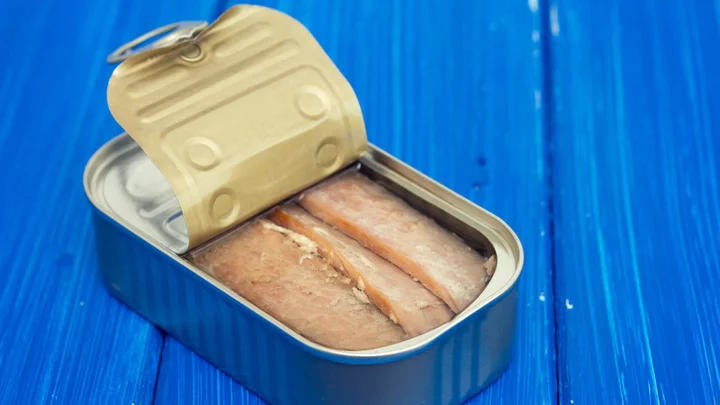
Contaminated sardines leave Irish man in hospital
A 32-year-old woman dies and another 12 in hospital after eating sardines in a Bordeaux restaurant.
2023-09-14 01:24

‘It can be hard when your kids leave the nest,’ mother says as study finds parents want their children back
Two-thirds of parents whose children have left home would gladly have them back again. A study with 2,000 mums and dads whose children have left said they would like their children to live no further than 14 miles away from them on average. But 90 per cent were keen to support their child’s dream and let them have their own adventure. As a result, 53 per cent travelled with them for their moving-in day, and 15 per cent stayed in a hotel to ensure they were settled. For 14 per cent of those, this stay ended up being as long as a week to ensure their child was okay. The research was commissioned by Premier Inn, which has created a downloadable ‘Empty Resters’ guide in partnership with content creator and parent, Tracey Lea Sayer, aged 51, to help parents through this change. She said: “It can be hard when your kids leave the nest. “Driving them up to university for the first time, for example, is the last big thing parents get to do for them before they become an adult. ”Our tips cover lots of the issues parents will face when helping kids leave the nest. “From packing advice to making sure kids have essential life skills like how to use a washing machine or plan a food shop, it’s all here. “Helping to focus on practical matters can be really beneficial for parents who might feel overwhelmed with emotion – and it can also really help them feel useful to their kids.” The study also revealed 36 per cent proceeded to redecorate their child’s bedroom after they’d shipped out. But 28 per cent of these simply spruced up the room, making it more comfortable, for when they come back for the holidays. It also emerged kids are slightly more likely to move out and stay local than move a good distance away (57 per cent compared to 41 per cent). And 29 per cent of parents find their children come home weekly. Most kids moved away for university (32 per cent), but 29 per cent moved in with a partner and 10 per cent got their own place with friends. But while 65 per cent would be happy to have their kids move back in with them if needed, 45 per cent said their relationship with their child has improved since they left. However, kids shouldn’t expect a free ride – as 55 per cent of the parents polled, via OnePoll, would be expecting some cash in rent every month. And their child moving out has led to 28 per cent travelling more, 26 per cent having more disposable income and 23 per cent eating out more. ‘A new chapter in her life’ Tracey said her eldest daughter Franke left to go to University last year and said one thing that brought them closer was “preparing her for her university life,” which helped them “bond over the little things that signified a new chapter in her life.” Tracey added: “From the obligatory shopping trip for essential bits and bobs, to teaching her how to make the perfect scrambled eggs and navigate laundry instructions. “Buying essentials in advance made us both feel more prepared, it meant Frankie and I could spend some quality time together too. “Equipped with a checklist of essentials well in advance, the daunting moving-in date had arrived. “Having already familiarised myself with the layout of the city, the location of her accommodation and the proximity of nearby hotels for visits during term time, I found a certain sense of comfort when we arrived in her university city, which is a fair distance from home. “Learning these in advance put my mind to ease and made the moving process a lot smoother.” Here are some top tips from Tracey for parents who are finding it hard after their children moved away: 1. Spend quality time with your other kids: When Frankie left for university, I got to spend real quality time with my younger son. He is quieter and doesn’t need as much attention but now he has me all to himself. 2. Create a New Routine: Establish a new daily routine that fits with your new schedule. Don’t think you will have loads more free time though. The admin that comes with having a child at Uni is relentless. Your ‘To do’ list won’t get any shorter. Student housing, finance and travel all need organising. 3. Focus on Self-Care: Prioritise you for once. Your physical and emotional well-being is important. Try to exercise, eat well and de-stress. 4. Connect with Other Parents: Sharing your experiences can be hugely comforting. I chat to the ladies at my exercise class who are all going through the same thing. We share notes, get it all off our chests and have a right good laugh about all the things the kids are getting up to. 5. Embrace the three Stages: Grief, relief and joy. Of course, you are going to be sad and grieve when your child leaves home, but you will get used to it and weirdly quite quickly. There is a sense of relief once they have settled in and made new friends. It took about three months for it to not feel strange just coming home to the boys Read More Schoolgirls struggle to access basic period protection, research suggests Cost of living means parents have less time to play with children, according to poll When is Freshers’ Week 2023 and how can I make the most of it? Meghan Markle gives children a shoutout as she joins Prince Harry at Invictus Games How many children does Elon Musk have? Single woman’s day in a life video is met with vitriol after going viral
2023-09-13 22:49

Sitting this many hours a day ‘rapidly increases’ dementia risk, study warns
Adults who spend a large part of their day engaging in sedentary behaviors are more prone to dementia, a new study finds. The research, published on Monday in the journal JAMA, found that people aged 60 and older who spend over 10 hours a day engaging in behaviors like sitting while watching TV or driving could be at increased risk of developing dementia. Scientists, including those from the University of Southern California say, the findings are concerning since Americans on average are sedentary for about 9.5 hours each day. In the study, researchers assessed the data from about 50,000 adults over the age of 60 who had wrist-worn accelerometers to measure their movement for 24 hours per day for a week. The individuals did not have a diagnosis of dementia at the start of the study, scientists noted. They then used a machine-learning algorithm to analyse the dataset of accelerometer readings and classify behaviors based on different intensities of physical activity. Using the AI system, scientists could differentiate between different types of activity and sleeping – providing an objective measure of the time each person spent engaging in different types of sedentary behaviors. After an average of six years of follow-up, researchers used hospital records and death registry data to determine dementia diagnosis, and found 414 participants had the neurological condition. Scientists then adjusted for factors such as age, sex, education level, race/ethnicity, chronic conditions, genetics as well as lifestyle characteristics like physical activity, diet, smoking and alcohol use, self-reported mental health. They found that sedentary behavior was linked with increased risk of dementia among the participants. However, they found that certain amounts of sedentary behavior was not associated with dementia. “We were surprised to find that the risk of dementia begins to rapidly increase after 10 hours spent sedentary each day, regardless of how the sedentary time was accumulated,” study author Gene Alexander from the University of Arizona said. “This suggests that it is the total time spent sedentary that drove the relationship between sedentary behavior and dementia risk, but importantly lower levels of sedentary behavior, up to around 10 hours, were not associated with increased risk,” Dr Alexander added. Researchers call for more studies to establish causality and whether physical activity can mitigate the risk of developing dementia. The findings, according to scientists, “should provide some reassurance to those of us with office jobs that involve prolonged periods of sitting, as long as we limit our total daily time spent sedentary”. Read More What it’s like having Menopause Brain in a millennial office Josh Duhamel and wife Audra Mari announce they’re expecting first baby together Woman warns not to ignore symptoms after hot flushes lead to leukaemia diagnosis Poor metabolic health ‘linked with 12% higher risk of dementia later in life’ Sleeping pill could reduce levels of Alzheimer’s proteins Daily aspirin dose can help prevent diabetes in older people, scientists say
2023-09-13 15:27

Josh Duhamel and wife Audra Mari announce they’re expecting first baby together
Josh Duhamel and his wife, Audra Mari, are welcome their first child together. The couple, who officially tied the knot in September 2022, shared a joint post to Instagram on 11 September to reveal that they’re expecting. The post included a picture of a baby’s ultrasound, as it was placed next to a white flower on a table. Mari simply captioned the post with: “Baby Duhamel coming soon,” along with a white heart emoji. Many famous faces took to the comments to congratulate the pair, including Duhmael’s ex-wife, Fergie, with whom he shares a 10-year-old son, Axl. “I am truly happy for you guys,” the singer commented. “Axl can’t wait to be a big brother.” “Congratulations! The most beautiful news! I’m thrilled for you both!!” The Girl Next Door star Elisha Cuthbert added. Former Bachelorette star Clare Crawley wrote: “I was just thinking this morning about you!!” Duhamel, 50, and Mari, 29, were first romantically linked in 2019, nearly two years after the actor announced his split from Fergie. In January 2022, the Shotgun Wedding star took to Instagram to reveal that he and Mari were engaged. “It’s on!! She found a message in a bottle that washed ashore and said YES!!” he wrote in the caption, alongside a photo of him and his partner, as she was holding a paper that read: “Audra Diane Mari, Will You Marry Me?” After tying the knot in September 2022, Mari went on to praise her relationship with her now-husband. “Everyone told me that after you get married you feel different,” she told Us Weekly, at the time. “To be honest, I never really believed them and I thought it would feel the same way it’s felt being with Joshua for the last three years. But it’s much different! I feel secure.” Last year, the couple also made headlines when they poked fun at their 21-year age difference. While attending the Casamigos Halloween party in Beverly Hills, California, Mari dressed up as 26-year-old Anna Nicole Smith, while Duhamel dressed up as her 89-year-old husband, billionaire J Howard Marshall. Mari went on to post a video on Instagram of her partner in costume, as he was wearing a bald cap. In the caption, she quipped: “What age difference? Ladies and gentlemen Anna Nicole Smith & J. Howard Marshall.” This wasn’t the first time Duhamel has poked fun at his and his wife’s age gap. During an appearance on The Kelly Clarkson Show in October 2022, he recalled how he had to go to the emergency room for a back injury, mere hours before his wedding. While he said he no longer had the pain during his big day, after going to the doctor, his back issues continued the next day. “The next morning, after the wedding, [I] couldn’t get out of bed again,” Duhamel said. “[My wife’s] like, ‘Oh my God. Everything is fine here. This is, like, the first day of my marriage, and I’m wheeling my husband around in a wheelchair.’ I’m already way older than she is.” “It wasn’t a great start,” he quipped. “But, I was like: ‘Babe, for better or worse.’” Read More Our weekend arts and culture picks, from The Fabelmans to Happy Valley Josh Duhamel and Audra Mari poke fun at their age gap by channeling Anna Nicole Smith and husband for Halloween Jennifer Lopez mysteriously wipes Instagram account and goes dark on other social channels Mom says she was shamed for teaching infant son to take pride in his appearance Kelly Osbourne opens up about weight loss journey Hairspray star reveals she went into labour while attending Beyoncé concert
2023-09-12 22:52

Dame Helen Mirren to walk the runway at Eiffel Tower fashion show
Dame Helen Mirren will walk the runway alongside models including Kendall Jenner and actors Viola Davis and Elle Fanning at a special fashion show under the Eiffel Tower in Paris
2023-09-12 18:59
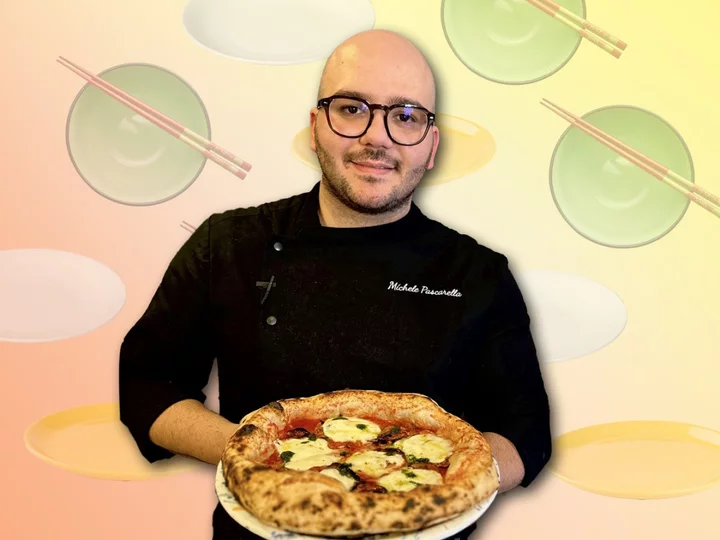
The dish that defines me: Michele Pascarella’s Neapolitan ragu
Defining Dishes is an IndyEats column that explores the significance of food at key moments in our lives. From recipes that have been passed down for generations, to flavours that hold a special place in our hearts, food shapes every part of our lives in ways we might not have ever imagined. I was very young when I started working in a local pizzeria in Caserta, the city near Naples where I grew up. I was 11 years old when I started working there, and stayed on for about eight years before moving to London to start my own business. But during my teenage years, one of the best memories I have is waking up to the smell of my mother’s ragu on Sundays. Neapolitan ragu is a specialty in the region, and we are very proud of it. It’s one of the two most famous varieties of ragu, the other being ragu bolognese, and uses whole chunks of beef and pork rather than ground meat. It must be cooked for a long time over a low heat, for at least eight hours, preferably 10 hours. My mother would get up at 5am to start making hers and it would continue to simmer slowly until the family is ready to eat in the afternoon. Sundays are special because it’s a time for the whole family, including our extended family, to come together and eat at the same table. My family comprised of my parents, my three siblings and myself, and we would usually be joined by my grandparents, aunts, uncles, cousins. We usually had anywhere between 15 to 20 people gathering on Sunday afternoons. It didn’t matter what commitments you had – on Sunday, you have to sit at the table with family. It’s the most important day of the week for us. The ragu is the dish that, for me, brings everything together: passion, love, happiness and strong ties with family. Because I worked late shifts often, I would wake up really late on Sundays, around 11am or 12pm. So by the time I wake up, the beautiful aroma of the ragu that has been cooking since 5am will have filled the whole house. I would wake up so hungry. My breakfast on these days would simply be a hunk of bread, torn and dipped straight into the still-simmering sauce, with some parmigiano reggiano sprinkled on top to help cool it down. Every family has their own way of eating ragu. You can dip bread in it, like I did for breakfast, but it is most commonly eaten with pasta. Some people have it with gnocchi while others might use a short pasta or spaghetti. But it does have to be a robust pasta shape, you can’t have ragu with a really small pasta, or it won’t stand up to the sauce. No one makes ragu like my mother’s. I could go to any restaurant, even those with Michelin stars, and it wouldn’t come anywhere close to hers. I strongly believe her secret ingredient is just her love for cooking for her children, as the dish needs that passion to make it taste so good. I never woke up at 5am to try and make it with her, it was so hard when I was a teenager! But when I did start to learn how to make it, it was very difficult to get up that early. I don’t know how she did it for so many years. In my restaurant, Napoli on the Road, I make a pizza with the slow-cooked ragu as a topping, along with a parmigiano reggiano cream. I call it Ricordi D’infanzia, which translates to “childhood memories” because it holds such strong nostalgia for me. But I still can’t make it like my mother does. When I go home to Caserta to see my family, I do try to wake up at 5am to make it with her. I’m less stressed about work when I’m there so I can usually do it, but when I’m back in London it’s hard to get up at that hour when you finish at midnight at the restaurant. Like most mothers who pass down their recipes, there are no accurate measurements to my mother’s ragu. Sometimes they put some sort of secret ingredient inside and won’t tell you. But I have learnt that you need to be flexible about it, depending on what ingredients are available to you. For example, maybe the tomatoes you buy from the market are too acidic. My mother fixes this by putting a whole potato in the sauce, because its starchiness will help to remove the acidity from the tomatoes. Or, she might add sugar to the sauce to mellow it out. It can be tricky to get it right, so I can only try my best to do better than my mother, but it is hard. I think I will be 80 or 90 years old before I perfect my own version! I’ve lived in London for almost 20 years, but I still miss those Sunday afternoons spent with my family at my uncle’s or grandfather’s house. In London, things are very fast-paced and rushed, you don’t really have time to sit down with people. I try to go back every couple of months, and I really look forward to it. My mother still makes her ragu. Even though nowadays it’s harder to get everyone together, we do our best to keep everyone united. I don’t have any family in London, so it’s important to me to keep that tradition alive when I go home. My dad has never visited me here because he is afraid of flying, but my mother comes fairly often and I’ll make ragu for her when she does. She never says anything bad about it – although, she will tell people: “It’s good… but it can be improved.” Still, I’m glad I have the opportunity to make it for her sometimes and it keeps me connected to home. Michele Pascarella is the chef-owner of Napoli on the Road. Read More The dish that defines me: Evelin Eros’s rum cake The dish that defines me: Mallini Kannan’s baked honey-soy salmon The dish that defines me: Frank Yeung’s prawn wontons
2023-09-12 13:46

Mom says she was shamed for teaching infant son to take pride in his appearance
A mother has revealed was shamed for dressing her five-month-old son every morning, in order to teach him how to take pride in his appearance. On 27 July, Geordian Abel - a 29-year-old fashion influencer and boutique owner from Fort Worth, Texas - received “brutal” backlash after her TikTok explaining that she dresses her son, Hutton, every day went viral. In the video, Abel was seen in a tan maxi dress adorned with a bow, while her son was dressed in a green polo onesie. She told viewers: “I think it’s important to instill in him from a young age that we get up, we get dressed, we take pride in what we’re wearing and how we look.” She captioned the video: “Teach ‘em young.” In an interview with Insider, the Flourish In Frills owner said that she made the TikTok video after receiving many comments on her “outfit of the day” (OOTD) videos, as viewers questioned why she and her son get “dressed to the nines” every day. The video has since received more than two million views and an onslaught of negative comments on the platform, which Abel later described as “brutal” in a follow-up video. “I too wear a one shoulder cocktail dress on a Monday morning,” one user snarked, while someone else wrote: “The greatest gift you can give him is to teach him not to care what other people think.” @geordianabel Teach em young ? #momlife #babyboy #4monthsold ♬ original sound - Geordian TikToker @bugsbryant added to the discourse when she stitched Abel’s video with her own TikTok, which quickly went viral with 2.3m views. “We are in the same clothes we slept in,” she replied to Abel’s post. “It is currently 3pm, and we will stay in this attire until tomorrow or until I decide to do the mountain of laundry that’s upstairs.” In a follow-up video, Abel told viewers that while she’s decided to take the criticism with a grain of salt, the “mom-shaming’s gotta stop.” She doubled down on dressing her son Hutton every day in a 29 August video, where she shared that the routine could “set him up for success for job interviews” or help counteract depression in the future. @bugsbryant #stitch with @Geordian ♬ original sound - BugsBryant Viewers in the comment section agreed with Abel, writing: “Exactly!!! I hate that people were mom shaming you about this.” Another person commented: “There’s so many benefits to changing out of PJs in the morning.” Speaking to Insider, Abel admitted that she didn’t expect her video “would get such negative reaction,” as she’s “never known any different than getting up and getting dressed.” However, she’s decided to turn the other cheek and has since been posting videos on TikTok that poke fun at the backlash. @geordianabel To each their own, but it's important to us ? #momlife #momsoftiktok #newmom ♬ be Love Is Beautifully Painful (Remix) - Ghost Duet In a video from 25 August, the boutique owner jokingly dressed up her baby boy in a tiny tuxedo, while other videos showed Abel dressed in a fancy gown as she tackled household chores. She hasn’t let the online negativity change the way she gets her son ready for the day, telling Insider that she’s a proponent of dressing with panache and flair. “I am super passionate about look good, feel good,” Abel said. The mom of one added that her positive attitude was instilled by her own mother from a young age. Plus, a boutique owner, she lives and breathes clothes and wouldn’t have it any other way. “I probably love clothes a tad more than the next girl,” she explained. “But even getting up and putting on athleisure, if that’s their jam, does a world of difference.” The Independent has reached out to Geordian Abel for comment. Read More Ruby Franke – update: TikTokers crash virtual court hearing before YouTube influencer held in jail Single woman’s day in a life video met with vitriol after going viral Rihanna and A$AP Rocky’s unusual new baby name has been revealed Schoolboy almost dies from swallowing magnets for TikTok challenge Woman shares honest review of New York City apartment TikTok mom slammed after making 5-year-old son run in 104 degree heat
2023-09-12 04:51
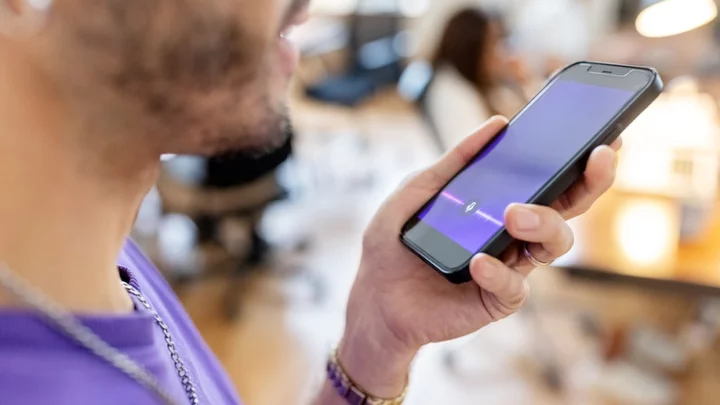
How to Bypass a Ringing Phone and Go Straight to Voicemail
Anyone born after 1996 probably doesn't understand the anxiety of making a phone call: The
2023-09-12 04:22
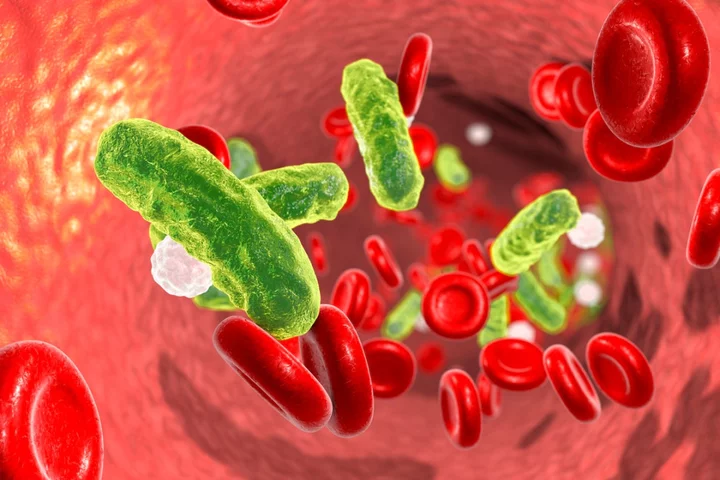
World Sepsis Day: What is the condition and its symptoms?
Sepsis is an illness that affects nearly 50 million people worldwide each year, with around 11 million deaths attributed to the condition. In the United States, at least 1.7 million adults in the US develop sepsis annually, and nearly 270,000 die as a result, the Centres for Disease Control and Prevention (CDC) says. It affects 245,000 people in the UK each year, with around 48,000 deaths, according to the UK Sepsis Trust. World Sepsis Day commemorated on 13th September every year, strives to raise global awareness of the life-threatening condition. The day is seen as “an opportunity for people worldwide to unite in the fight against sepsis,” the Global Sepsis Alliance says. Here is everything you need to know about sepsis: What is sepsis? Sepsis Research says when the condition strikes, the immune system “overreacts” and begins to attack the infection and everything else around it “including the body’s own tissues and organs.” “Any type of infection — bacterial, viral or fungal — can lead to sepsis,” it adds. When sepsis occurs, it can cause inflammation and cause blood clotting around the body, if it does not get treated, it can result in death, organ failure and tissue damage, CDC says. Sepsis cannot be caught from another person, the NHS explains. What are the symptoms? The World Health Organisation (WHO) explains that the condition is a “medical emergency,” so if you think a person is exhibiting signs of sepsis or if you are showing signs – make sure you call 999 or go to the emergency room immediately. According to WHO, common signs and symptoms include: • Fever or low temperature and shivering • Confusion • Difficulty breathing • Clammy or sweaty skin • Extreme body pain or discomfort • High heart rate, weak pulse or low blood pressure • Low urine output Symptoms in children include: • Fast breathing • Convulsions • Pale skin • Lethargy • Difficulty waking up • Feeling cold to touch What are the causes? The Mayo Clinic says any type of infection can lead to sepsis and those that more commonly cause the condition include infections of: • Lungs, such as pneumonia • Kidney, bladder and other parts of the urinary system • Digestive system • Bloodstream • Catheter sites • Wounds or burns “Sepsis often presents as the clinical deterioration of common and preventable infections such as those of the respiratory, gastrointestinal and urinary tract, or of wounds and skin. Sepsis is frequently under-diagnosed at an early stage - when it still is potentially reversible,” the Global Sepsis Alliance says. Who is most at risk? The people most at risk of the condition, according to Mayo Clinic, are: • People with lower immune response, such as those being treated for cancer • People with human immunodeficiency virus (HIV). • People with chronic diseases such as diabetes kidney disease or chronic obstructive pulmonary disease (COPD). • people who are in intensive care or longer hospital stays. • People over the age of 65 • Infants How many cases are there globally? The WHO says a scientific publication estimated that in 2017 there were 48.9 million cases and 11 million sepsis-related deaths worldwide, which accounted for almost 20 per cent of all global deaths. That same year, almost half of all global sepsis cases occurred among children with an estimated 20 million cases and 2.9 million global deaths in children under 5 years of age. How can it be prevented? The Global Sepsis Alliance says the best to to avoid sepsis is by preventing infection. This can be done by undergoing vaccinations, ensuring that you only come into contact with clean water, washing your hands properly and if you are giving birth - making sure it is in a clean and sterilised environment. Can sepsis be treated? Sepsis can be treated with appropriate treatment such as antibiotics – this should be given as soon as possible. The CDC says sometimes “surgery is required to remove tissue damaged by the infection”. “Antibiotics are critical tools for treating life-threatening infections, like those that can lead to sepsis,” the CDC adds. Read More 5 things everyone needs to know about eczema 13 potential cancer symptoms you should get checked out How can I improve my teenager’s low mood? Duran Duran’s Andy Taylor says he’s ‘asymptomatic’ after end-of-life diagnosis Nine hours of parallel surgery: how Britain’s first womb transplant was carried out Bursts of activity that make you huff and puff ‘linked to reduced cancer risk’
2023-09-12 03:21
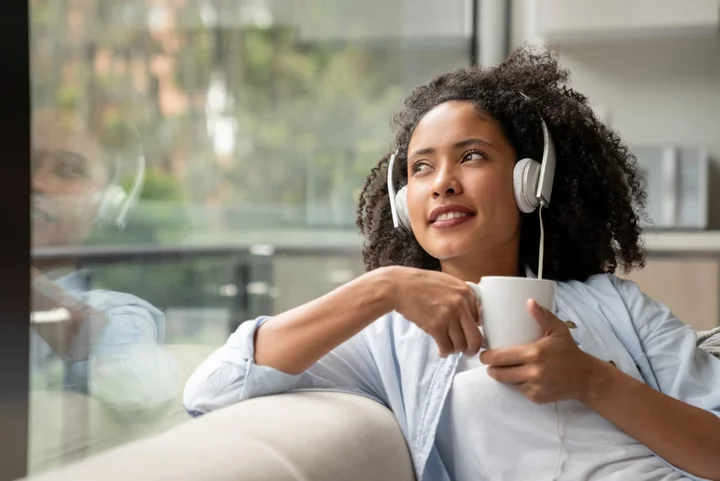
Scientists reveal everyday pleasures that elevate brain performance
Have you got a favourite track? Well, it’s time to turn it up and enjoy the beat with a warm cup of coffee. Everyday pleasures like listening to music or sipping a cup of coffee can elevate brain activity, improving cognitive performance including in tasks demanding concentration and memory, according to a recent study. A group of researchers looked at a new NYU Tandon School of Engineering study involving MindWatch a brain-monitoring technology. MindWatch is an algorithm that analyses a person’s brain activity from data which is collected from a wearable device which can monitor electrodermal activity (EDA). EDA is a measure of electrical changes in the skin triggered by emotional stress, often associated with sweat responses. In the study, published in Nature Scientific Reports, participants were made to wear these skin-monitoring wristbands as well as brain-monitoring headbands to complete a range of cognitive tests. The tests were conducted while the participants listened to music, drank their coffee and smelled perfumes reflecting their individual preferences. These tests were completed again without any of those stimulants. Researchers found that both music and coffee significantly influenced participants’ brain arousal, and put them in a “state of mind” that could “modulate their performance in the working memory tasks they were performing,” the NYU press release says. The wearable device found that the stimulates specifically triggered increased “beta band” brain wave activity which is linked to peak cognitive performance. Perfumes also had a slight positive effect, suggesting to researchers that there is a need for further investigation. “The pandemic has impacted the mental well-being of many people across the globe and now more than ever, there is a need to seamlessly monitor the negative impact of everyday stressors on one’s cognitive function,” says Rose Faghih, an associate professor of biomedical engineering who developed MindWatch in six years. “Right now MindWatch is still under development, but our eventual goal is that it will contribute to technology that could allow any person to monitor his or her own brain cognitive arousal in real-time, detecting moments of acute stress or cognitive disengagement, for example. “At those times, MindWatch could ‘nudge’ a person towards simple and safe interventions — perhaps listening to music — so they could get themselves into a brain state in which they feel better and perform job or school tasks more successfully, professor Faghih added. The specific tests used in this study involved a working memory task, called the n-back test which involves presenting a sequence of stimuli to the participants, in this case, images or sounds. It was shown one by one, and people were asked to indicate whether the current stimulus matched the one presented "n" items back in the sequence. This study employed a 1-back test — the participant responded "yes" when the current stimulus is the same as the one presented one item back — and a more challenging 3-back test, asking the same for three items back. Three types of music were also tested out, there was energetic and relaxing music familiar to the participants, as well as novel AI-generated music that reflected the subject’s tastes. Results showed that familiar, energetic music led to the best performance, followed by AI-generated music tailored to the participant’s taste. Coffee and perfume had lesser but still noticeable positive impacts. The MindWatch team wish to conduct further experiments to confirm the tool’s reliability and understand the broader effectiveness of various interventions on brain activity. Researchers have noted that while specific interventions might generally boost brain performance, individual results may vary. The study is published in the journal Nature. Read More ‘The Puss in Boots Effect:’ Women use infant-directed speech when addressing dogs with larger eyes Study reveals one thing to focus on if you want to live to 100 Extreme heat may speed up cognitive decline for people from poorer neighbourhoods Quick, moist and flavourful: Jurgen Krauss’s marble cake Mother whose hot flushes led to leukaemia diagnosis says ‘don’t ignore’ symptoms What happens at a sexual health check-up?
2023-09-11 23:49
